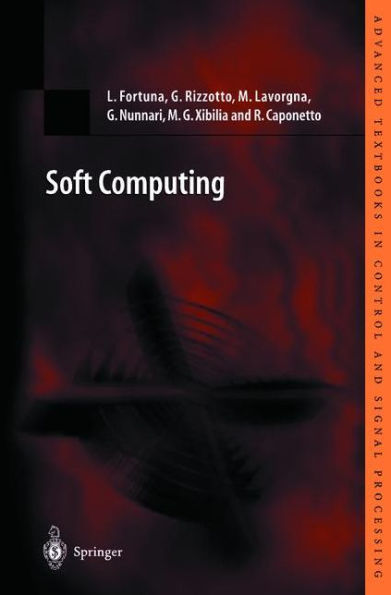Soft Computing: New Trends and Applications
In the last decade new artificial intelligence methods for the modelling and control of complex systems, namely neural networks, fuzzy logic and probabilistic reasoning have drawn the interest of researchers and engineers. Recently, the advantages achievable by using combinations of these methods, which have independent origin and evolution, have been pointed out, generating a new paradigm which is now termed "soft-computing". This new methodology subsumes the capabilities of neural networks for modelling non-linear systems and for solving classification problems, the power of fuzzy-logic to represent approximate or heuristic reasoning and the large capabilities of evolutionary computation for problem optimisation. The book presents a clear understanding of a new type of computation system, the cellular neural network (CNN), which has been successfully applied to the solution of many heavy computation problems, mainly in the fields of image processing and complex partial differential equations. CNNs' computation-based systems represent new opportunities for improving the soft-computation toolbox. The application of soft computing to complex systems and in particular to chaotic systems with the generation of chaotic dynamics by using CNN is also described. These aspects are of particular interest owing to their growing interest for research and application purposes.
Specific topics covered in the text include:
- fuzzy logic, control and neural networks;
- artificial neural networks and their application in the modelling and control of dynamical systems;
- evolutionary optimisation algorithms;
- complex dynamics and cellular neural networks;
- applications in urban traffic noise monitoring, robot control and rapid thermal process systems.
1118070800
Specific topics covered in the text include:
- fuzzy logic, control and neural networks;
- artificial neural networks and their application in the modelling and control of dynamical systems;
- evolutionary optimisation algorithms;
- complex dynamics and cellular neural networks;
- applications in urban traffic noise monitoring, robot control and rapid thermal process systems.
Soft Computing: New Trends and Applications
In the last decade new artificial intelligence methods for the modelling and control of complex systems, namely neural networks, fuzzy logic and probabilistic reasoning have drawn the interest of researchers and engineers. Recently, the advantages achievable by using combinations of these methods, which have independent origin and evolution, have been pointed out, generating a new paradigm which is now termed "soft-computing". This new methodology subsumes the capabilities of neural networks for modelling non-linear systems and for solving classification problems, the power of fuzzy-logic to represent approximate or heuristic reasoning and the large capabilities of evolutionary computation for problem optimisation. The book presents a clear understanding of a new type of computation system, the cellular neural network (CNN), which has been successfully applied to the solution of many heavy computation problems, mainly in the fields of image processing and complex partial differential equations. CNNs' computation-based systems represent new opportunities for improving the soft-computation toolbox. The application of soft computing to complex systems and in particular to chaotic systems with the generation of chaotic dynamics by using CNN is also described. These aspects are of particular interest owing to their growing interest for research and application purposes.
Specific topics covered in the text include:
- fuzzy logic, control and neural networks;
- artificial neural networks and their application in the modelling and control of dynamical systems;
- evolutionary optimisation algorithms;
- complex dynamics and cellular neural networks;
- applications in urban traffic noise monitoring, robot control and rapid thermal process systems.
Specific topics covered in the text include:
- fuzzy logic, control and neural networks;
- artificial neural networks and their application in the modelling and control of dynamical systems;
- evolutionary optimisation algorithms;
- complex dynamics and cellular neural networks;
- applications in urban traffic noise monitoring, robot control and rapid thermal process systems.
54.99
In Stock
5
1

Soft Computing: New Trends and Applications
267
Soft Computing: New Trends and Applications
267(2001)
$54.99
54.99
In Stock

Product Details
| ISBN-13: | 9781852333089 |
|---|---|
| Publisher: | Springer London |
| Publication date: | 06/08/2001 |
| Series: | Advanced Textbooks in Control and Signal Processing |
| Edition description: | 2001 |
| Pages: | 267 |
| Product dimensions: | 6.10(w) x 9.25(h) x 0.03(d) |
From the B&N Reads Blog
